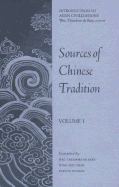 A little over a year ago, sometime in November of 2004 or so, I started on a reading project intended to give myself a grounding in East Asian history.
A little over a year ago, sometime in November of 2004 or so, I started on a reading project intended to give myself a grounding in East Asian history.
I had started on A New History of Korea, by Ki-baik Lee, and quickly found that in order to understand Korean history, I would need a grasp of Chinese and Japanese history as well. So I began to read China: A New History, by John King Fairbank and Merle Goldman, as well as A History of Japan, by R.H.P. Mason and J.G. Caiger. Then I decided to supplement this reading with four volumes I had kept on my bookshelves since college, when I had largely failed to read them: William Theodore de Bary’s indispensible collections, Sources of Chinese Tradition, Volume I and Volume II, and his Sources of Japanese Tradition, Volume I and Volume II, which provide translations of original materials that trace Chinese and Japanese thought from their earliest origins to modern times. And once I had decided to read the Chinese and Japanese sources, I obviously couldn’t neglect the Sources of Korean Tradition, Volume I and Volume II, Columbia University Press’s more recent addition to its excellent Sources series (which also includes Sources of Indian Tradition).
Altogether, this added up to 3,829 pages. Considering that I lingered over them for well over a year — putting them down for stretches of time, especially during the hectic autumn of last year, when I was the sole speechwriter during the busy season of UN committee work and reform efforts — this is not exactly proof of my speed-reading abilities. On the other hand, it’s not always easy to face another 40 pages of Neo-Confucian debate on whether the universe is made of principle or force, or another 30 pages of medieval Korean proposals for land reform that not even their authors took seriously.
Still, there is reward in having delved even into these obscure and difficult corners of East Asian thought. And then some sections were genuinely fascinating, like Japan’s strange origin myths, the struggle of the Chinese to come to terms with the West, or Korea’s furious rejection of Japanese colonialism. And the overall picture is one that will help me greatly in understanding the Koreans I work with and their views of themselves in the world.
Having spent so much time exploring East Asia from the inside out, I have now turned to The Korean War, by Max Hastings, and the shift in perspective is a bit dizzying. To have read Korean accounts of their jubilation when the Americans arrived to liberate them from the Japanese, and then to read of the Americans’ utter bafflement at what they found in Korea, is to be reminded how little Korea registered in the consciousness of most people in most parts of the world. When it came into focus, it was as a pawn in Great Power politics — just as it had been earlier, in the wrangles among its neighbors, Japan, China and Russia. It’s weird to go back to the American sense of Korea as an alien land, its people at least as baffling as those of Afghanistan and Iraq strike us today. But the combination of perspectives, interior and exterior, will hopefully give me a fuller sense of how Korea’s unique history is connected to the broader world.
